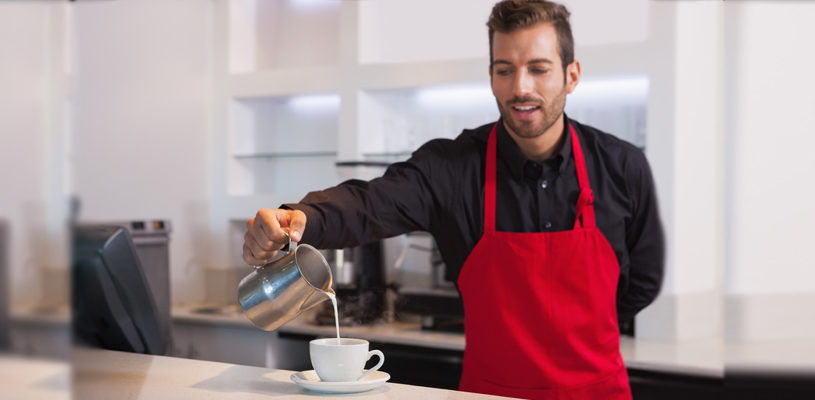New Urban Allies Forging Partnerships in Mid-sized Cities

Twenty-first century city building is becoming increasingly complex. Municipal leaders are asking how to create community prosperity, while constrained by a fiscal arrangement that is overly reliant on property taxes. Finding a balance between attracting employment, building essential infrastructure, and providing high-quality services to local residents – while protecting natural and cultural heritage – is a tall order for city staff and councillors. Added to this is a changing employment landscape that favours knowledge-intensive industries and a growing number of residents who prioritize vibrant downtowns, walkability, and transit-connected communities. But, a municipality’s planning or economic development departments can’t do this work alone. Today, city builders must prioritize collaborative, cross-sector approaches to city building in order to thrive.
Such collaborative, cluster-based approaches to urban economic development are evident in Canada’s largest cities. In Toronto, the MARS Discovery District is a downtown innovation hub, showcasing the benefits of partnerships between public and private institutions. Similarly, the growing Artificial Intelligence Hub in Montreal boasts industry and academic collaborations that are creating a strong employment cluster in the city’s core. With a broad tax base, research-intensive universities, and a high quality of life, large urban centres have a distinct advantage when attracting and retaining the new, knowledge-based economy.1 While big cities are leading the way in 21st-century urban development, there are important lessons that mid-sized cities can glean from these experiences.
As urban thinkers move beyond traditional “smokestack chasing” models of economic development, they are advancing the notion of “third wave” local economic development: a model that promotes improving quality of life for all residents, reducing social inequities and protecting the environment.2 Such an approach requires collaboration and community engagement to be successful. Indeed, as cities grow and adapt to new social and economic realities, concepts of inclusion and equity must also be embedded in urban policy,3 and non-traditional urban actors play an important role in this equation.
Mid-Sized Cities
Mid-sized cities, however, face unique challenges in this new economic development. With a shared history of suburban proliferation and associated downtown decline; a planning framework that favours low-density, dispersed development; and limited staffing resources to support and evaluate new initiatives fostering partnerships, or leverage a third wave approach to economic development, offers an important opportunity for smaller urban centre rejuvenation.
Research shows that 45 percent of Ontario residents live in mid-sized cities, with a population between 50,000-500,000.4 This research focused on strategies mid-sized cities are using to revitalize their core areas. This is a particularly fruitful time to engage with Ontario’s mid-sized cities, especially those included in the province’s Growth Plan for the Greater Golden Horseshoe. With a provincial challenge to curb sprawling development and attract people and jobs to their downtown cores, eight of the mid-sized cities in the growth plan sit outside of the province’s protected Greenbelt area and the primary commuter-shed from Toronto. Downtowns in Peterborough, Barrie, Brantford, Kitchener, Waterloo, Cambridge, Guelph, and St. Catharines have been identified as “urban growth centres” and are required to direct public and private investments to their core areas. These cities all have a historic core area, an active downtown business association, and are home to a post-secondary institution.
In researching Ontario’s mid-sized cities, it became apparent that economic development was not the sole purview of the municipality. From community planning events to collaborations between businesses and local non-profit groups, Ontario’s mid-sized cities are leveraging community resources to support downtown revitalization and economic development. In downtown Guelph for example, a Community Improvement Plan (CIP) was created through extensive public consultation, and has since resulted in locally curated incentives that are described as providing a predictable investment environment for both public and private sector partners. CIPs are being rolled out in other mid-sized cities as well, and they are resulting in adaptive reuse of heritage buildings, new residential developments in the core, and façade improvements on downtown streets.
Business Improvement Areas
One of the key allies in downtown economic development that has emerged through this research was the local Business Improvement Area (BIA). BIAs were first established in the 1970s in response to the growth of suburban malls on the periphery of cities. As primarily downtown, “merchant-led” associations, funded by a tax levy on property owners in the district, according to Ontario’s BIA Handbook, their mandate is to beautify the streetscape, host events, and promote local businesses. While these laudable efforts have sustained BIAs for decades, their presence as downtown-first advocates takes on a new significance in the context of the provincial growth plan.
For the first time since their inception, BIAs in the case study area can leverage a regional-scale plan that promotes and encourages investment in their respective downtowns. As municipalities work to align their planning framework to provincial targets, BIA advocacy has taken on increased importance. In downtown Barrie, for example, the BIA was a key partner and advocate for a new public space in the core. Now under construction, Memorial Square & Meridian Place will draw thousands of visitors. In St. Catharines, the BIA has become a member of the local coworking space, Cowork Niagara, which has the dual impact of supporting a local member group and promoting downtown as a key location for independent workers looking to share office space. In Cambridge, the three BIAs have established a partnership with the local police service and students at Conestoga College to have local bike ambassadors in their downtown neighbourhoods.
These are a few of the many examples of BIA leadership in urban rejuvenation. Whether advocating for well-appointed public spaces, attracting and supporting new businesses, or promoting safe streets, BIA staff are working to improve the quality of life in their downtowns – a factor that has shown proven success in attracting and retaining knowledge and creative workers. While the BIA model has been around for more than 40 years, its mandate is beginning to show signs of evolving into 21st-century urban affairs. No longer exclusively focused on the needs of downtown businesses, their stable base of funding and diverse membership has allowed BIAs to become a credible voice for urban renewal in cities big and small. In moving beyond traditional alliances with business and property owners, BIAs are reaching out to other non-profits, post-secondary institutions, and neighbourhood groups to advance a broad urban mandate that can assist municipalities in achieving their growth plan targets.
New Urban Allies?
As cities react to global shifts in the economy and new urban trends that favour dense, walkable cities, municipalities should be encouraged to look beyond their own staffing resources for support. Research has shown that 21st-century city building can benefit from collaborations and cross-sector alliances. In mid-sized cities, where public resources are limited, new urban allies can offer much needed support in local economic development and downtown revitalization initiatives. The strategies that BIAs are using to advance a downtown first agenda, and their ability to engage a cross-section of partners to promote urban rejuvenation, is important to highlight. BIAs are just one example of types of organizations that municipalities can engage with to achieve their goals, and the list of potential allies is long: universities, colleges, coworking spaces, childcare centres, neighbourhood groups, and so many more.
For city builders, one of the most important questions to ask is, who are our city’s urban allies?MW
1 See Gertler’s 2003 Neptis report: Smart Growth and the Regional Economy.
2 Nancey Leigh and Edward Blakely’s (2017) research on Local Economic Development (LED) outlines this new approach.
3 This concept is outlined in Richard Florida’s book: The New Urban Crisis (2017).
4 See Evergreen’s report: Mid-Sized City Discussion Paper.
Audrey Jamal lives in Guelph, Ontario. She is a mid-sized city researcher, consultant, and Ph.D. candidate in Planning at the University of Waterloo. Audrey is a regular speaker on issues of urban revitalization, downtowns, and community development.
as published in Municipal World, February 2018



